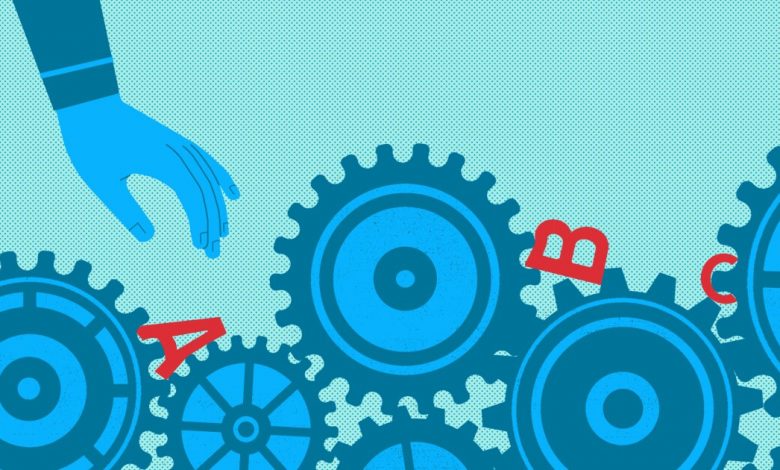The Unintended Consequences of ‘Ungrading’

[ad_1]
This semester, Talbert has been experimenting with what’s probably the most alternative practice of all: “ungrading,” in which grades are de-emphasized as far as possible. But, as he wrote in a recent blog post, he has some reservations about the approach. The big one: Could ungrading actually make equity gaps worse?
Talbert’s question is provocative. Getting rid of grades is a bold step, one proponents see as student-centered. Making things worse for disadvantaged students would be a dire unintended consequence. The question of ungrading’s effect is also difficult to answer: Research on equity gaps usually compares students’ grades across different racial or socioeconomic groups; in ungrading, students generally determine their own grades. That kind of self-evaluation, Talbert thinks, requires a skill not all students have had a chance to develop.
Ungrading has been adopted by a small but growing group of professors, including some well-known ones. As the practice expands, Talbert’s question is a reminder that context is critical in teaching — and that any teaching strategy, however well-intentioned or evidence-based, must be enacted with care.
Since the 2020 release of Ungrading: Why Rating Students Undermines Learning (and What to Do Instead), the book’s editor, Susan D. Blum, a professor of anthropology at the University of Notre Dame, has given a steady stream of presentations about ungrading, most of them over Zoom. She’s done more than a dozen already in 2022.
The book, which brings together perspectives from professors across disciplines and institution types, was written before the pandemic, but its release turned out to be timely. The challenges of the past two years have led more professors to question longstanding grading practices, and raised their awareness of alternatives.
That first pandemic semester forced a short-term reckoning with grades, with many professors convinced that giving them as usual was unfair. Classes had suddenly — and in many cases, clumsily — moved online. This was an emergency. Like most emergencies, it would have a disproportionate impact on the already disadvantaged. Should a student fail because she didn’t have reliable internet access, or because a family member became ill?
But this problem isn’t specific to the pandemic. “It’s never been the case,” Blum says, “that everybody had good, safe, healthy conditions.” Any time students are rated and sorted, some of them have overcome significant obstacles to succeed, and others didn’t have to.
Ungrading is meant to get out of the rating-and-sorting business, to instead provide more individual counsel on strengths and weaknesses. But that doesn’t mean it can level the playing field.
“Grades and success in school and out of school correlate almost completely with prior advantage,” Blum says. “In every way. That’s true with grades, that’s true without grades.”
Grades and success in school and out of school correlate almost completely with prior advantage.
Students who have “excellent conventional academic preparation,” Blum says, “and socioeconomic privilege and racial privilege and linguistic privilege, are very familiar with how schools work, because schools basically reflect the dominant culture.” High-achieving students know how those structures work — the “hidden curriculum” is available to them.
In his blog post, Talbert wrote that alternative grading practices, like specifications grading — where professors don’t give points for work but either mark it as satisfactory or give detailed feedback on how it could be improved on a second attempt — can help mitigate inequity. But he worried that taking grades away entirely would make a course more difficult for less-advantaged students to navigate. Grades could be “guideposts” that those students need as they figure out college, he said, and removing them might be like removing “all the signs in the airport in a foreign country. Sure, there’s a possibility that a person would focus more on the signs than on the journey they’re taking; but those signs can definitely be helpful, as well.”
Studies lend credence to that hypothesis: having highly structured courses has been shown to be particularly important for less-advantaged students. Providing structure is one of the main strategies of inclusive teaching, and grades surely provide some structure.
After that, she says, go through the list. “Is the grade the best, or only, way for you to accomplish that amazing thing for your students?”
If students come into class with uneven abilities to self-assess, Masland says, then make self-assessment a learning objective for the course, and teach students how to do it. Self-evaluation is a skill they’ll need later. Better to address this disparity head-on than to try to work around it.
Joshua Eyler has been openly critical of the emphasis placed on traditional grades and worries about their impact on student mental health. Eyler, director of faculty development at the University of Mississippi, is working on a book about grades. He’d like to see more instructors experiment with alternative approaches. “When I think about, how do I help people get to the model that works best for them?, it’s all about context,” he says. “Who you are, what are you teaching, what institution are you teaching in, who are your students, how many students do you have.”
There are many ways to come at alternative grading, Eyler says. Whichever way they go, he says, instructors will need to think carefully about how the pieces of their course come together.
It’s also worth remembering that a professor can improve grading without getting rid of traditional grades, says Regan A.R. Gurung, associate vice provost and executive director of the Center for Teaching and Learning at Oregon State University. Gurung encourages professors to consider the ideas laid out in the book Grading for Equity, by Joe Feldman. They can, for instance, give students an incomplete or postpone recording any grade until work is in, rather than giving a zero that pulls students down. They can move to a grading scale with fewer levels, which has less false precision.
Gurung, who is also a professor of psychology, has experimented with ungrading. Before taking the plunge, he says, professors should engage in some reflection. “There are a lot of problems with grades. Which one are you trying to solve? Are you trying to solve pressure? Are you trying to solve reliability? Are you trying to solve bias?”
The answer to that question, Gurung says, will help pinpoint the potential solution.
And professors don’t have to throw grades away in one fell swoop, he adds: “Another one of my tips is, Start small.” Professors might de-emphasize grades in smaller, more advanced courses, and on lower-stakes assignments.
Talbert is right, Gurung says, that some students will be more prepared to assess themselves than others will, and professors should be mindful of that. “People very good-naturedly and well-intentioned want to jump to a ‘let’s do away with grades,’” he says, “but you have to realize how much preparation it takes for yourself, and how much support you need to give the student.”
Ungrading, after all, describes something professors aren’t going to do. Perhaps when they stop grading, the other elements of their course design matter even more.
[ad_2]
Source link






